ZEITRAUM furniture is
made from wood
sourced from sustainable forestry
Origin of wood
All the woods used by ZEITRAUM comply with FSC and PEFC standards. ZEITRAUM does not import wood from areas threatened by massive logging and slash-and-burn practices. Approximately 83 % of our wood is sourced from Central European forests, which are located in the regional vicinity of our production sites. The remaining 17 % of the wood comes from large forest areas in North America, specifically Pennsylvania and Missouri.
Wood and its associated handicrafts are an ancient cultural heritage that has shaped the way of life for people over centuries.
Wood offers the opportunity to design living spaces in
a sustainable manner. Few other resources are as environmentally
friendly and globally available.
Our woods
Wood has a relatively high strength-to-weight ratio and is easily workable. Additionally, wood plays a essential role in climate protection with its positive energy and carbon balance, as well as its potential for material and energy recycling. Wood combines sustainability and aesthetics, which is why it is considered the “resource of the future.”
Currently, we use ash, oak, American cherry, as well as European and American walnut.
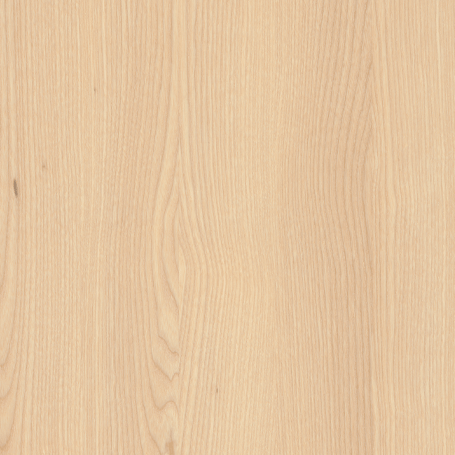
Ash
The ash (Fraxinus) is a genus of plants in the olive family and is one of the most widespread native deciduous trees. Three species of ash are found in Europe: the common ash (Fraxinus excelsior), the manna ash (Fraxinus ornus) and the narrow-leaved ash (Fraxinus angustifolia).
It usually grows on moist and calcareous soils. The wood is characterised above all by its high elasticity and strength and is therefore often used for the manufacture of sports equipment. The facultative heartwood of the tree appears darker and is due to the entry of oxygen. The physical properties of the tree are not affected in any way. The sometimes strong light-dark contrast that often results from this gives the tree a very lively appearance. (cf. WAGENFUEHR, 2007)
Origin: North Bavaria, Germany, Central Europe
Certificates: FSC, PEFC
Characteristics: Deciduous tree, dark yellow-brown, facultative core formation, ring porous, high elasticity

Oak
The oak (Quercus) is a genus of plants in the beech family. They are easily recognised by their typical fruit, the acorn. The pioneer trees have a long history and are closely associated with us humans. In Germany, oak was already regarded by the Germanic tribes as a sign of immortality and steadfastness because of its hard wood and the very late falling leaves.
During the Romantic period, it was regarded above all as a symbol of faithfulness. In view of the long-lasting, durable wood, this description probably fits best. With the right materials and professional workmanship, this wood is used to make faithful furniture that can be used for many generations to come. (cf. WAGENFUEHR, 2007)
Origin: North Bavaria, Germany, Central Europe
Certificates: FSC, PEFC
Characteristics: Deciduous tree, dark yellow-brown, plain, ring-porous, hard, very durable, high strength
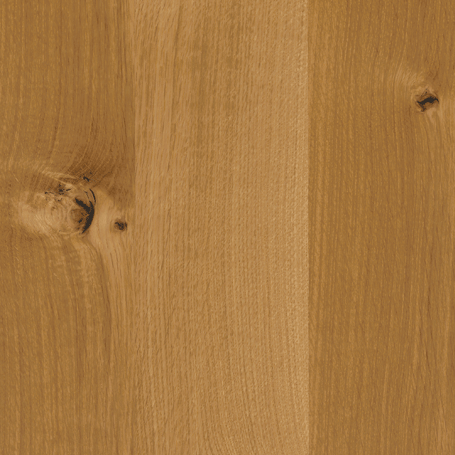
Knotty oak
We use the term “knotty oak” to describe an alternative to the otherwise rather plain wood selection and thus offer enthusiasts a deliberately natural and lively appearance of this wood species. Distinctive growth characteristics give each piece of furniture an individual character.
Every tree has a knotty mantle, but this is usually not used in furniture manufacture for aesthetic reasons. But professionally processed, the “flaws” of the knotty wood do not matter in most cases and it can be used without hesitation. It is therefore possible to process almost the entire trunk into highquality, aesthetically interesting furniture. The composition of the wood used requires a trained eye and a fine sense for the overall appearance.
Origin: North Bavaria, Germany, Central Europe
Certificates: FSC, PEFC
Characteristics: Deciduous tree, dark yellow-brown, wild character, various wood characteristics, ring porous, hard, very durable, high strength

American walnut
The North American walnut (Juglans) has an extravagant appearance. In some cases, it appears in an unusual colour scheme and is nevertheless familiar. The American walnut wood used by ZEITRAUM comes from Missouri and Pennsylvania. It is sourced from two family-owned companies, Missouri-Pacific Lumber Co. and Horizon Wood Products INC..
The two companies have been committed to sustainability from the beginning. Only individual trees are removed from the huge forests, creating optimal conditions for the natural rejuvenation of the forest, because of the removal, light reaches the young plants, which can then take the place of the felled trees, and provide their own offspring.
Origin: Pennsylvania, Missouri (USA)
Certificates: Evergreen Initiative, NHLA
Characteristics: Deciduous tree, semi-ring-porous, dark matt brown, violet to black brown, very durable, hard, good processing properties
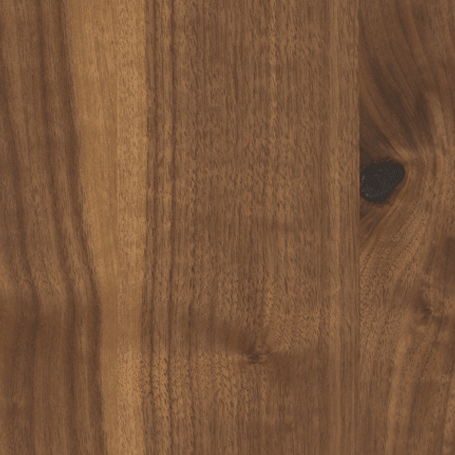
Knotty American walnut
The North American walnut (Juglans) has a unique appearance. In some cases, it appears in unusual colouring and yet is familiar. The wood used by ZEITRAUM comes from Missouri and Pennsylvania. It is sourced from two family owned companies, Missouri-Pacific Lumber Co. and Horizon Wood Products INC..
The two companies have always been committed to sustainability. They take only single trees from huge forests. The ecological management provides optimal conditions for a natural regeneration of the forest, because the partial removal of trees allows light to reach the young plants, which can then take the place of the felled trees and provide for their own reproduction after many years.
With “Walnut wild”, ZEITRAUM designates an alternative to the otherwise rather plain wood selection and thus offers enthusiasts a deliberately natural and lively appearance of this wood species. Distinctive growth characteristics give each piece of furniture an individual character.
Origin: Pennsylvania, Missouri (USA)
Certificates: Evergreen Initiative, NHLA
Characteristics: Deciduous tree, semi-ring-porous, dark matt brown, violet to black brown, very durable, hard, good processing properties
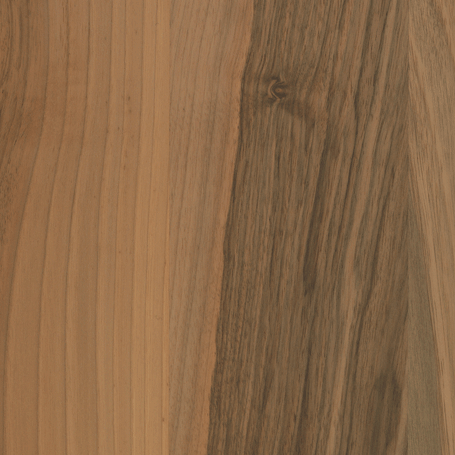
European walnut
The European walnut (Juglans) is harder, heavier and usually lighter in colour than the so often processed American variety. Its heartwood is matt brown, slightly violet to black-brown and very popular in upmarket furniture manufacturing due to its excellent processing properties and unique appearance.
The sometimes irregular texture and the cloudy colouring are appealing. Walnut is “semi-circularporous” and has a natural durability, which is due in particular to the tannic acid inherent in the wood.
Origin: Germany, Central Europe
Certificates: FSC, PEFC
Characteristics: Deciduous tree, semi-ring porous, matt brown, violet to black brown, durable, hard, good processing properties
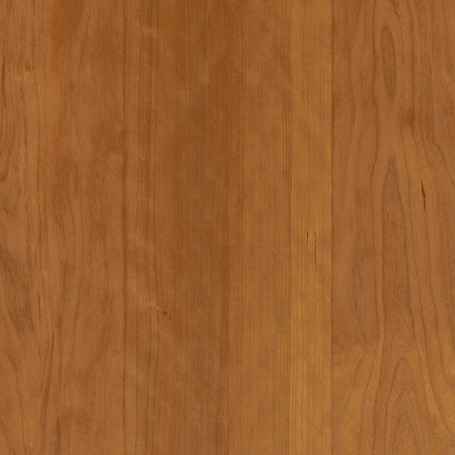
American cherry
The North American cherry trees (Prunus serotina) are a plant species of the genus Prunus and belong to the botanical family of the rose family. Due to the mostly fine annual ring structure of the wood, it is excellently suited for woodturning, carving or cutting. Furthermore, it can be easily glued, is flexible, elastic and, not least for this reason, extremely popular in upmarket furniture manufacturing. (cf. WAGENFUEHR, 2007)
Cherry wood can be described as a modern classic. It is distinguished, very high quality and noble in its appearance. In contrast to its European relative, the wood darkens considerably and takes on a golden-brown to brown-red hue over time. Cherry trees grow up to 24 metres high and reach trunk diameters of up to one metre.
Origin: Pennsylvania, Missouri (USA)
Certificates: Evergreen Initiative, NHLA
Characteristics: Deciduous tree, pale yellow to reddish brown, fine tree ring structure, flexible, good processing properties
Woods from the USA
For many years, we have been working with family-owned companies from Missouri and Pennsylvania. We source our American hardwoods from these regions. These companies are members of the American Hardwood Council (AHEC) and operate in a completely sustainable manner. To comply with the European Timber Regulation (EUTR) standards and provide transparency regarding the environmentally friendly sourcing of traded wood, the American Hardwood Council developed an „Environmental Profile“ in 2013. This tool allows for independent and individual analysis of all environmental data, including the life cycle assessment of each wood species, growth rate per second, as well as the occurrence and annual harvest. All data is publicly accessible.
ZEITRAUM occasionally uses wood-based materials for
seating shells, shelves and linoleum tabletops.
Wood-based materials
Wood-based materials are created by crushing and then joining structural elements of wood. In the process, veneers, strips, sticks, wood wool, chips or fibres are joined together with or without binders. The size and shape ultimately determine the type and properties of the material. The various processes give the materials special mechanical and physical properties which, in addition to their appearance, clearly distinguish them from solid wood.

MDF
Medium-density fibreboard, or MDF for short, belongs to the wood fibre materials. They consist of fibres about 3 to 6 mm long, which are pressed into boards by adding binders and applying high pressure and heat.
Thanks to the almost homogeneous structure and the very abrasion-resistant surface, this material is ideal as a substrate for coatings of all kinds and can be processed in many ways. MDF is mainly used in furniture and interior design and is available in various colours. (cf. MATERIAL ARCHIVE, 2020)
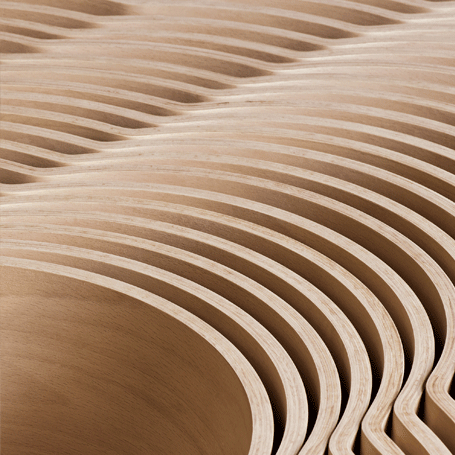
Moulded beech wood & plywood
“Moulded wood” or “moulded plywood” is a two- or three-dimensional plywood consisting of several layers of veneer pressed into a negative mould using heat, steam and pressure.
The usually alternating direction of the wood fibres in layers results in a very resistant material that is excellently suited for the production of seat shells and other moulded parts in furniture and interior design. Thanks to its high strength properties, with comparatively low weight, it is very versatile and is even used for aircraft construction. (cf. LOHMANN, 2010)
Becker Brakel produces at the largest beech growth area in the world.
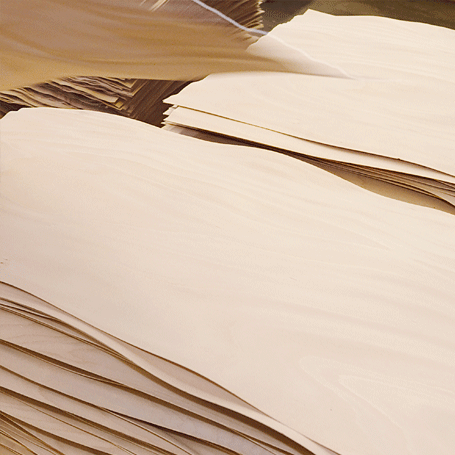
Veneer
Veneers have a long history. In 2900 BC, the Egyptians were already separating thin boards from tree trunks to use them as decorative elements.
From the 14th century onwards, veneers were increasingly used in Europe to make high-quality pieces of furniture. Until the 19th century, its use was reserved for the wealthy society, when new technologies also made rational production possible and veneer became more affordable. The material has not lost its importance to this day. (cf. LOHMANN, 2010)
Veneer production is probably the most economically efficient way of using wood. Veneers are thin layers of wood that are peeled, sawn or sliced from the trunk, depending on the manufacturing process. The subsequent intended use determines the texture and appearance of the veneer. The thickness of the material can vary from 0.1 mm to 6 mm. This is also directly related to the anatomical structure of each individual tree, as some woods are better suited to a very thin end product than others due to their fine structure (cf. INITIATIVE FURNIER UND NATUR, 2018).
At ZEITRAUM, fine veneers are used for the moulded wood seat shells of the FORM, OKITO PLY, MORPH and ZENSO chair families as well as for the CODE shelf.
